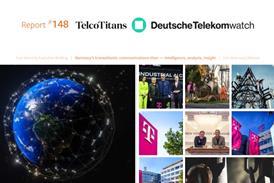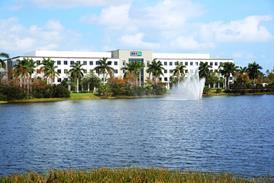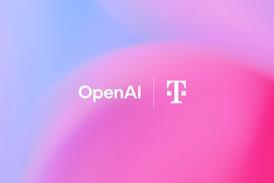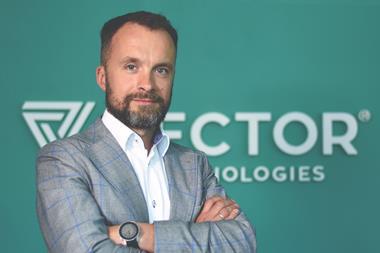- Broadband SI Vector Technologies considers that to succeed in a fast-moving multi‑faceted market, service providers need to create an interoperable multi‑vendor access environment that can adapt.
- A truly diversified network depends on genuine hardware compatibility to unlock benefits, but this creates a rapidly expanding “interoperability check matrix” as hardware proliferates and software updates stack up.
- Interoperability is too important to service providers’ strategic goals to rely on vendor assertions or overly broad standardisation, with thorough ongoing testing essential.
- Internal resources can be overwhelmed with testing demands, potentially to the detriment of commercially valuable projects, with independent testing a solution that can deliver a competitive edge.
- The fundamental significance of interoperability will ultimately prove itself in stability and customer experience benefits that will support business growth, Vector Technologies believes.

In this article
1. Inside the matrix: managing the exponential threat of multiplying systems2. What’s my motivation? Neutral voices key to true interoperability and trust
3. Independent tests help telcos move fast, without breaking things
4. Consolidation benefits at risk if access network coordination is blocked
5. Interoperability provides stability, keeps customers happy
Ensuring a multi‑vendor environment throughout network infrastructure is rising up the priority list for senior management across the telco sector, notes Mateusz Sulikowski, Chief Executive of European access networks integration vendor Vector Technologies.
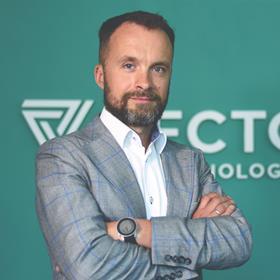
Beyond the traditional challenges of lock-in, competition, innovation and optionality, recent years have shown that supply chains can be seriously disrupted, whether by natural disasters and global crises like the recent pandemic, or geopolitical events such as the war in Ukraine. National governments are also taking decisive steps towards demanding vendor restriction and diversity in critical national infrastructure, with the designation of some vendors as high-risk for political or security purposes overriding commercial priorities.
Add to this the current phase of telecoms sector development, which is seeing converging iterations of next‑generation technologies stacking up, and a period of infrastructure‑building transitioning into a period of market consolidation.
This complexity of environment makes any strategic planning difficult, and all of these factors are coming into play at a time when operators remain under pressure to maintain a tight grip on spend as they seek to return to more sustainable levels of profitability.
The case for willing, able and obligated telcos to maintain networks that comprise technology from multiple sources in all key aspects is clear, but Vector Technologies stresses that a truly multi-vendor environment will depend on interoperability to be effective.
“ Interoperability in access networks is fundamental to service providers success in a rapidly evolving sector. It is a strategic imperative in a consolidating environment, a competitive advantage in an innovative marketplace, a guarantee against macroeconomic and geopolitical shocks, and a negotiating tool in major procurement programmes. ”
Sulikowski.
This interoperability will, according to Sulikowski, be such a significant element of evolving networks that operators need to recognise the extent of the challenge involved and take appropriate steps to ensure that their infrastructure is equipped to provide it.
In Vector Technologies’ view, the complexity of ensuring network environments are effectively interoperable — and remain so — also means it is a field where service providers will need support beyond what can be provided by internal resources. Finding the right independent partners for this support will be vital.
Inside the matrix: managing the exponential threat of multiplying systems
Vector Technologies stresses that diversifying within a network is not simply a box‑ticking exercise, where kit from different vendors is deployed in discrete network locations, and never the twain shall meet. That approach merely creates two potential risk points if there is a supply problem rather than one, and does not create genuine choice.
To gain the benefits of diversification, the equipment from the two vendors needs to be genuinely interoperable in order to create a situation where, whether at a point of crisis or as a result of a commercial decision, one vendors’ kit can be swapped for another with little or no disruption.
Interoperability will also need to be multi‑dimensional as networks evolve, and it will be vital that equipment is configured not only to exchange information with established partners of a service provider, but also capable of managing the same integration should another supplier become part of the network.
Maciej Muzalewski, Vector Technologies’ Chief Technology Officer, talks about the “interoperability check matrix”, which can quickly see the combinations of equipment that need to be tested rising exponentially as different optical line terminal (OLT) and optical network terminal (ONT) elements are introduced, coupled with variation in rapidly multiplying firmware versions. This can create a heavy burden for technical teams responsible for stable access networks, and a long‑term challenge for the operator.

The Vector Technologies CTO highlights that this can rapidly become a demanding and costly issue operationally and commercially, citing as an example a successfully growing fibre wholesaler in Europe facing a substantial lab‑testing backlog triggered by organic and inorganic growth and a rapidly expanding stable of ISP partners.
In this “multi‑multi‑vendor” situation, with approaching 100 different ONT models on several OLTs across a diverse geographic footprint, pressure was on to validate and certify the customer terminals to ensure that signed‑up end‑users could be onboarded quickly and service providers could continue to expand their businesses, generating revenue for both partners.
The wholesaler addressed the lab overload by partnering with Vector Technologies to augment testing operations and clear the pipeline for new revenue flow more quickly. “We are helping operators, including tier-two players and other challengers, to allocate their engineering resources”, says Muzalewski. “While we are taking on time‑consuming processes such as testing the new firmware versions of an OLT, they can learn new things and make more ambitious projects”.
What’s my motivation? Neutral voices key to true interoperability and trust
When it comes to ensuring interoperability in practice the onus is on the operators.
For access hardware vendors, even those confident enough to deliver interoperable elements of their portfolio, the delivery of end‑to‑end solutions will be a natural preference with inevitable unconscious bias. Turning to an independent third‑party for testing can help protect the trust in business relationship between operators and vendors through a neutral assessment.
When problems arise linked to factors that encompass both OLT and ONT equipment installed in the access network, service providers can also get caught in the middle, warns Sulikowski. Interoperability testing can be used to provide accurate data on potential malfunctions and determine the specific cause and assess accountability before the problem before it impacts on operational performance.
For operators, commercial negotiations can also be undertaken from a position of strength when a service provider’s position is informed by independent data generated by a vendor‑agnostic partner detailing strengths and weaknesses. Testing is also more economic than repairs and servicing systems in a live environment.
Sulikowski stresses, however, that the merits of independent assessment and support “is not all about cost and money”.
“ Relationships are important, and operators need to have trust in their partners and trust that the technology will not fail in the long‑run. Having a neutral partner assessing that technology and interoperability can protect that trust. ”
Sulikowski.
There may be an inclination towards assuming that standards bodies will tackle any obstacles linked to ensuring that equipment from different vendors will work together in a network environment. However these organisations understandably leave scope for interpretation to secure consensus, and avoid stifling innovation.
It is therefore important to not assume that all standardised solutions will work together in a network environment. “Compatible with standards does not mean fully interoperable”, warns Muzalewski. He notes that a device can be compatible with standards but can still fall short of functioning effectively with other vendors’ devices, representing “a huge business risk for the operator”.
Vector Technologies considers that when operators take full responsibility for interoperability, they can ensure that their interests are at the forefront and that network‑specific obstacles can be removed and smoothed out.
Independent tests help telcos move fast, without breaking things
Network evolution can also be accelerated when backed with comprehensive testing, according to Vector Technologies’ Muzalewski, with proper preparation having a significant impact on the timing of deployments and on enabling faster network development. He cites research from Nokia that estimated it can take up to six months to introduce a new element to an operator’s network, stalling momentum and demanding complex long‑term planning.
Vector Technologies’ own Access Network Test Facility is designed to meet evolving demands from deployment of next‑generation technologies, enabling the testing of headend platforms and CPE solutions in an environment offering up‑to‑10Gbps throughput.
Testing in the lab can broadly take two approaches. For some service providers, the priority is ONT compliance with critical standards using an ideal OLT simulator combined with an optical network protocol analyser to assess performance against multiple versions of passive optical infrastructure. Through this approach, any standards compliance issues can be captured, and potential interoperability issues identified.
Alternatively, some service providers prioritise thorough testing of specific OLT and ONT equipment combinations from two different suppliers, using a mutually agreed test scope that reflects an operator’s service and business models. This can more effectively mirror the network environment in which the equipment will be deployed, and the actual services that will be carried using it.
“ Operators shouldn’t be limited only to one or two large vendors offering a complete end‑to‑end solution. Just the opposite: open the network for the smaller vendors who are very flexible, fast, and can offer a value, especially to the altnets. But it requires very careful interoperability testing with the OLT vendor. ”
Muzalewski.
Consolidation benefits at risk if access network coordination is blocked
Muzalewski, a veteran of the European telco scene, sees echoes of the past in today’s next‑generation network sector, with the number of fibre players burgeoning across the region. “I still have a map in my office of the UK cable operators — 300 players that very quickly became one”, he says, “we’re in a similar situation now; not just in the UK, but also in countries such as Germany”.
In this pre‑consolidation phase, it is vital for operators to be conscious that they may need to demonstrate flexibility and stability in a developing future environment where they may become involved in a merger.
While this stage of development will provide opportunities for strong new players to emerge through mergers and acquisitions, bringing together architecture, systems, process and other technology choices independently made by different management teams has the potential to put obstacles in the way of bigger strategic objectives.
The Poland‑based integrator cites an example from its home market, where a clear need for support with interoperability testing emerged in a post‑acquisition environment when a second widely‑deployed OLT became part of the expanded network. This newly‑acquired equipment was soon found to not be fully‑interoperable with previously tested and integrated ONT equipment from a range of vendors already in the buyer’s network. This required a significant effort to ensure compatibility to help fulfil the strategic objectives of the initial deal.
“ When there’s an acquisition, it brings new systems, of course, but also new infrastructure on the access side; new controllers or whole systems which need to be integrated to deliver a stable service to their end-customers. We are bringing value as an integrator to help them to achieve all the benefits coming from interoperable systems. ”
Sulikowski.
Interoperability provides stability, keeps customers happy
Interoperability can also, in the longer‑term, support evolving operator goals as commercial priorities demand a progression towards a customer‑centric focus for the business, rather than network‑centricity.
This shift in priorities can be seen in fibre markets such as the UK, where connecting customers and generating revenue is pulling focus that was previously trained on network buildout.
Key to winning, and keeping, these customers is network reliability and stability, that can be enhanced by ensuring confidence in network and CPE equipment performance, and with engineering resources that are focused on key customer metrics, rather than running to stand still and maintain compatibility for installed solutions.
Sulikowski highlights work that Vector Technologies has undertaken with an operator in North America that previously had over 40 engineers focused purely on maintaining interoperability between networks and modems, but was able to reallocate that resource to helping the business grow.
“They could outsource to us all the repetitive work and equipment maintenance, so their people could focus on projects that were more interesting to them, and more future oriented”, he says.




